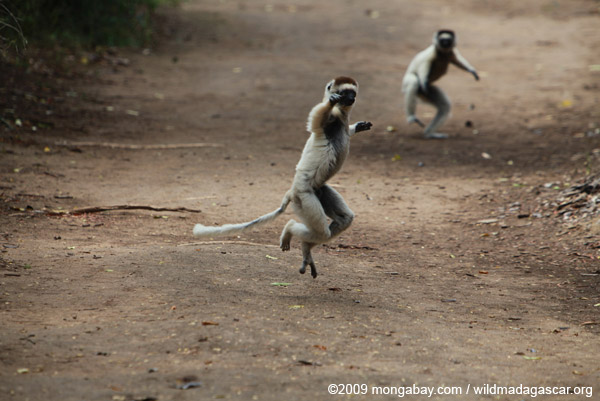
These male sifakas are in the midst of a territorial dispute. The dominant male is chasing off another male
Verreaux’s sifaka from southern Madagascar is known as the dancing lemur for the way it moves across open ground.
Primarily a tree-dweller, sifakas are somewhat awkward on the ground due to their splayed feet. Since trees in their habitat are often dispersed, sifakas cross open ground by sashaying on their hind legs with arms aloft.
Beyond their ballet performances, sifakas are famous for their ability to leap from tree to tree in Madagascar’s endemic spiny forest, where virtually every branch is covered with sharp thorns or spines.

Sifakas generally live in groups of 3-13 individuals — the average group size is around 6 — consisting of roughly equal numbers of adult males and females, and many young. For their daily routine, sifakas patrol a small section of their home page. When they encounter another group there is usually a nonviolent confrontation consisting of territorial displays, growling and scent marking. Within their own group, sifakas communicate with barks, growls, howls, shrieks, and “hums” and their name is derived from their “shifak” alarm call which is used when a potential ground predator is seen.

While Verreaux’s sifaka is the most famous, there are presently eight other recognized species of sifaka. The rarest is the silky sifaka which is endangered by habitat destruction in and around Marojejy in northern Madagascar.
More pictures of Verreaux’s sifaka dancing
More reading
Dancing lemur attracts tourists to island of Madagascar May 30, 2005
Video